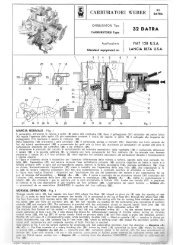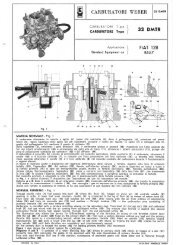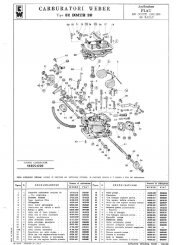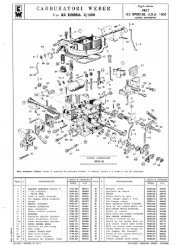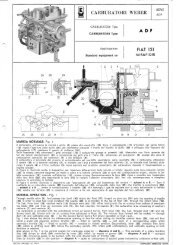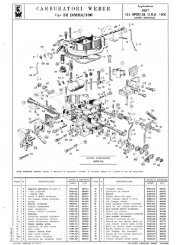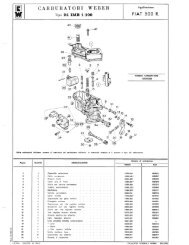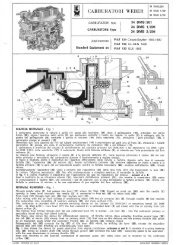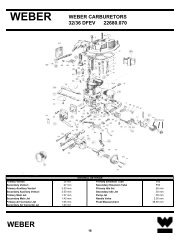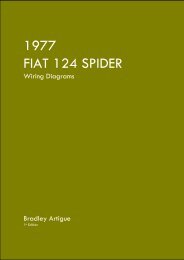Engine Maintenance and Modification Bradley Artigue
FIAT 124 Spider Engine Maintenance + Modification - Artigue.com
FIAT 124 Spider Engine Maintenance + Modification - Artigue.com
- No tags were found...
Create successful ePaper yourself
Turn your PDF publications into a flip-book with our unique Google optimized e-Paper software.
FIAT 124 Spider<br />
<strong>Engine</strong> <strong>Maintenance</strong> + <strong>Modification</strong><br />
the computer to increase the amount of fuel. The system will also increase or decrease<br />
the amount of fuel based on the temperature of the air entering the system.<br />
5.7 The Oxygen Sensor<br />
A final sensor performs continuous monitoring of the exhaust gases. This input is used<br />
by the computer to adjust fuel flow to best reach lambda. The oxygen sensor, also<br />
known as a lambda sensor, is a ceramic <strong>and</strong> platinum electrode. The ceramic permits<br />
diffusion of the oxygen present in the air. At engine operating temperatures it becomes<br />
conductive; when the level of oxygen on one side of the electrode is different from that<br />
on the other side a voltage is generated. This voltage is reported back to the fuel<br />
injection computer. Sensor operation becomes effective at temperatures above 350<br />
degrees Celsius; below this range the fuel injection computer receives no meaningful<br />
input. Many vehicles employ heated oxygen sensors that output data to the computer<br />
much faster; the FIAT uses the unheated type.<br />
5.8 Other Components<br />
If you flip back to the overview diagram (figure 33) you’ll notice a number of other fuel<br />
injection pieces <strong>and</strong> parts that we did not cover. Some of them, such as the air<br />
conditioner bypass valve, exist to provide extra air into the plenum when a load (such as<br />
the a/c compressor) is switched on. Rarely do FIAT Spiders even have this valve, but if<br />
you have the aftermarket air conditioner it may be fitted. You’ll also notice the fuel<br />
delivery components, the fuel pump, fuel filter, fuel manifold, <strong>and</strong> fuel pressure<br />
regulator. These are responsible for fuel delivery (pump), filtering (filter), routing<br />
(manifold) <strong>and</strong> maintaining constant flow rates to each injector (regulator). The regulator<br />
keeps the flow constant by increasing fuel pressure <strong>and</strong> manifold pressure is near<br />
ambient <strong>and</strong> dropping pressure as the manifold vacuum increases.<br />
44



